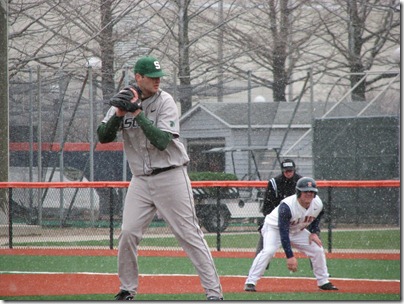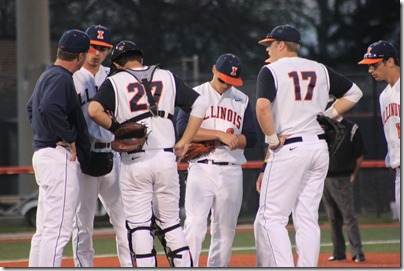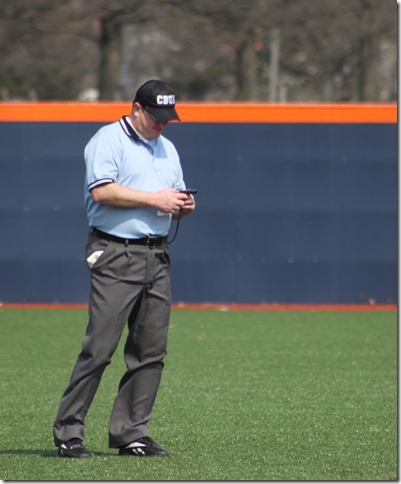I have a friend named Todd who is an umpire in Division III back east. Whenever we get talking, the discussion always gets back to baseball and umpiring. He knows I’m an Illinois baseball fan so I like to pump him with questions. Sometimes they revolve around obscure rules and odd situations I may have seen in play at Illinois games and I like to get his take on them. With an ump’s perspective, he gives me a new look at the game.
Here three things I’ve learned recently. Maybe you’ll find them interesting. Or maybe you already knew about them in which case you can go to the head of the class.
Disclaimer: These opinions are from his experience. They may do things different here in the Big Ten.
Who calls the game in case of bad weather?
I got thinking about this question because of the Saturday game against Indiana State that was cancelled. I found it unusual that the game was called five minutes before the scheduled start. The fans were in the stands and the players were all warmed up then the PA announcer told us the game had been cancelled because of cold weather. I was curious who made the decision.
Todd says that generally speaking, up until game time, it is the home team that makes the decision whether to cancel a game because of weather. Once the game starts though, that decision is handed over to the umpire crew.
By the way, if you’re curious, that photo above was taken at a Michigan State-Illinois game on March 29, 2009. And yes, they finished that game.
How long does a home plate umpire wait before going out to the mound to keep the game going?
We see this several times a game. A manager, catcher and who knows else goes out to the mound for a conference. Sooner or later, you see the home plate umpire stride on out there to hurry them up or they’d be out there forever.
I once asked Todd if he had a set time limit that he gave teams for a conference on the mound. Now keep in mind that every umpire is different but this is Todd’s routine. He tells me that once the conference starts he waits about ten seconds then takes the time to brush off home plate. If it doesn’t seem like it’s going to break up anytime soon, then he makes his move toward the mound.
Again, every umpire is different, I’m sure.
What is that device strapped to the umpire’s belt?
Time is of the essence now, apparently. These devices are stopwatches. Todd tells me that as of this year, umpires have an additional duty. They are required to make sure pitchers deliver the ball twenty seconds after they receive the ball from the catcher. And unless the game is televised, there should not be more than 90 seconds between half innings.
This USA Today article has the details on the rules:
“With the 20-second pitch clock, when the bases are empty the pitcher has 20 seconds from the time he receives the ball from the catcher to begin his windup. Should he fail to do so within 20 seconds, he will be given a warning. Each violation after that, a ball will be added to the pitch count. Hitters that fail to enter the batter’s box within the allotted amount of time will be given a strike for each violation following the initial warning.
— The 90 second clock begins once the last out of the previous inning is made. From that point, the pitcher has 90 seconds to warm up and the leadoff batter must be in the batter’s box.”
Some NCAA stadiums are even installing pitch clocks.
I appreciate the inside info my buddy gives me. It helps me enjoy the game more. I’ll even sometimes hear those stories of when he’s had to eject a player or a coach. Glad he’s not an ump here in the Big Ten… he may have a quick thumb.






